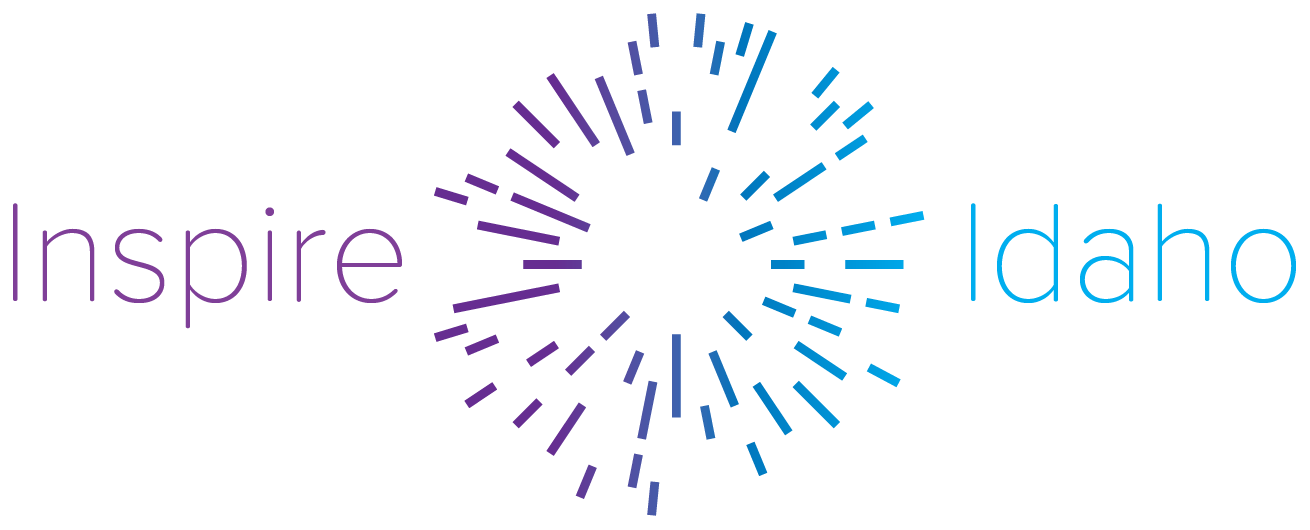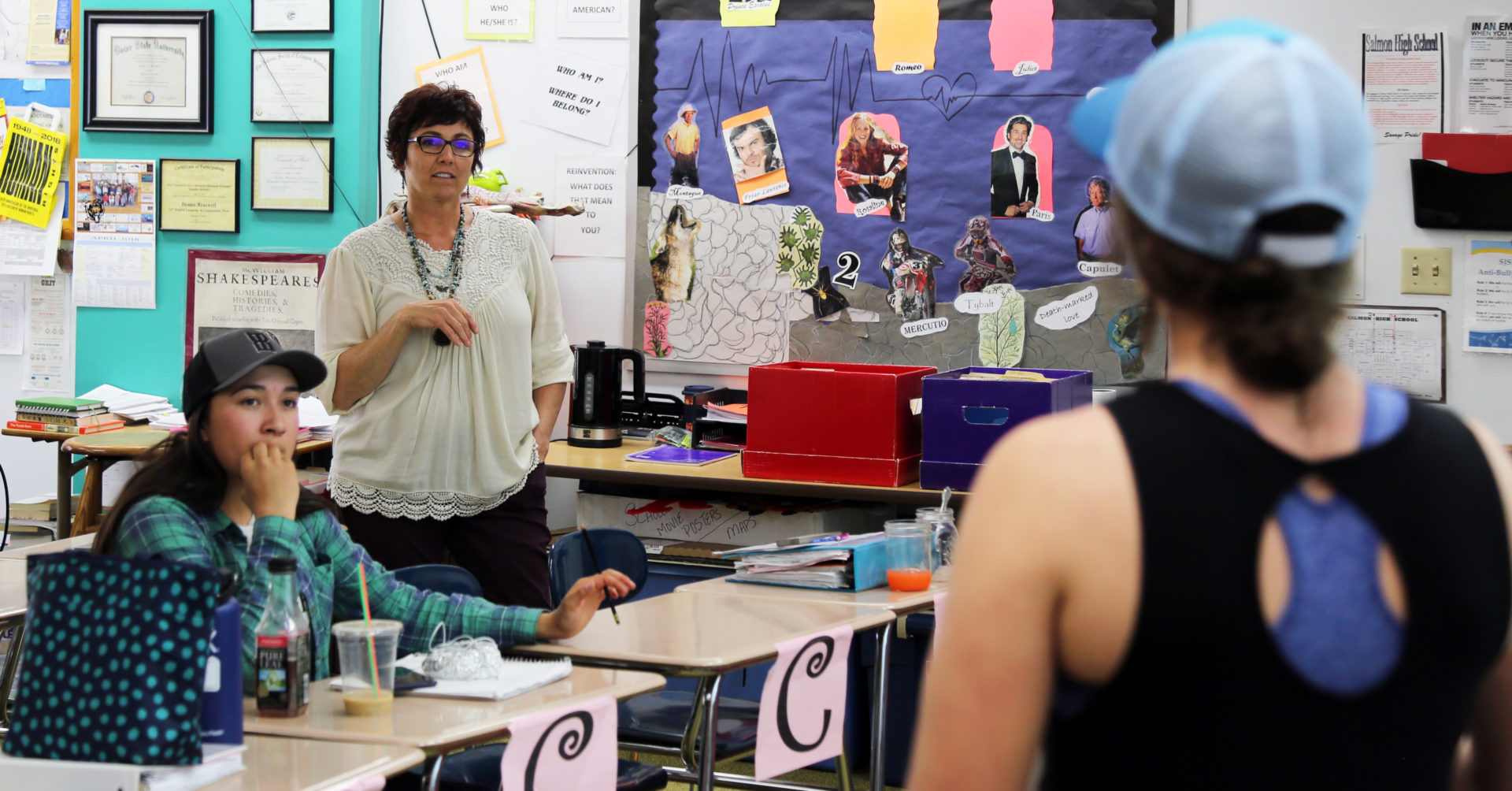
Salmon makes learning more personal
THIS ARTICLE IS PART OF OUR YEAR-LONG SERIES CALLED INSPIRE IDAHO, WHICH SPOTLIGHTS SCHOOLS DOING SOMETHING DIFFERENTLY FOR A BETTER OUTCOME FOR STUDENTS.
Andrew Reed | May 21, 2018
SALMON – When the bell rings, Tracy Burgess’s Algebra 1 students at Salmon High grab their notebooks off the shelf and dive into their own chapter work.
There are no lectures or tests.
Students work at their own pace and on their own — personalized — math plan. Each plan is unique and created to fit the individual's abilities and learning pace.
The approach is called mastery-based learning — students work at their own speed and advance only when they have mastered a concept.
Salmon High is one of 19 schools selected for Idaho's mastery pilot program. The mastery program was created by the 2015 Legislature and signed into law by Gov. Butch Otter. Moving to a mastery-based system is among the 20 recommendations issued by Otter’s Task Force for Improving Education in 2013.
The 19 mastery pilot projects share $1 million in state grants.
Since introducing mastery-base learning, Salmon teachers are noticing a switch in school culture. The kids are taking more responsibility in their own learning.
“(Before) students would only do something for a grade and not the knowledge,” Burgess said. "(Now) students are taking ownership of their education."
During the 2016-17 school year: Cheating occurred in the classroom and students accepted failure.
Today, during the 2017-18 school year: Students find it hard to cheat on coursework, attendance is up and the number of students carrying at least one "F" grade from the beginning of the school year to the end of the first semester went from 123 down to 69.
Salmon made the school-wide change to master-based learning because leaders believe this will improve learning in the classroom and better prepare students for college. The goal is to improve the graduation rate of 76.5 percent to 90 percent and achieve higher standardize test scores.
THIS IS NOT AN EDUCATION REFORM, THIS IS AN OPPORTUNITY TO CHANGE EDUCATION IN ORDER TO PREPARE STUDENTS TO BE SUCCESSFUL.
– KATIE COOPER, A TEACHER AT SALMON HIGH
How it works
Freshmen Avery Cole and Jackson Peets sit side-by-side in Burgess's Algebra 1 class but their time is spent differently.
Avery works on Chapter 9 solving quadratic functions and equations. Jackson Peets works on Chapter 8 learning multiply binomials to get quadratic equations.
“The best part is not waiting around for the entire class to nail down a math problem,” Avery said. Burgess' doesn’t lecture or teach at the white board. She walks around the classroom and provides “mini lessons” working with students one-on-one.
“It is different from what I’m used to, but I’m okay with it,” Burgess said. “Students now take ownership of their learning."
Avery will move onto geometry in the fall, while some of her classmates who have not mastered Algebra 1 will retake the class until they master all the required standards.

Students must master a topic not simply through traditional testing, but by using projects, presentations or even activities outside of school.
“On a paper you can cheat your way through it — a project you must use your knowledge to learn a subject,” said Troy Bruce, a sophomore at Salmon High. “I see it as do it until you understand it. I get the time to learn without feeling rushed."
Teachers allow students to reflect on their mistakes and revise assignments until the work is mastered. Teachers encourage and help students as the make multiple revisions on an assignment if necessary.
“We had no idea how huge of an impact revising would be for students,” said Denise Braswell, and English teacher at Salmon High. "Students and teachers are held accountable."
There’s no such thing as an “F” in mastery-based learning, because failing is considered an attempt at learning that helps lead to mastery. Students still receive letter grades on a report card, but on class assignments, teachers use a numerical approach, such as 0 to 4, rather than letter grades to show academic progress.
Assignment grade scale
[0] Not handed in
No evidence
[1] Beginning
Little understanding, but working towards understanding
[2] Developing
Emerging work, approaching standard
[3] Proficient
Work meets standards
[4] Mastery
Exemplary work, above standard
The scale is designed to encourage students to think of learning as a process. To meet a level for each skill, students need to prove they have acquired it by being proficient, reaching a score of '3'. If a student does not meet the standard with a score of '3', the student is required to have additional tutoring during an advisory class period.
"Students are engaged in the process of learning since grades are no longer a barrier or even punishment as it was in the past," Braswell said.
Braswell said students are taking risks with their learning. The top performing students who were afraid to sacrifice a grade-point average, are now enrolling in advanced placement classes. Students who learn at a slower pace, are improving grade-point averages.
"Risk taking is privileged and expected," Braswell said. "Teachers have become collaborators with students when it comes to the revision process."
In the first year of mastery-based learning at Salmon High, no students advanced to the next class level. Teachers are creating a plan for next steps if a student masters a class before a semester is over.
Teachers believe mastery-based learning is preparing students for college.
"If you have the skill base and self-advocacy, you will be awesome in life," Burgess said

